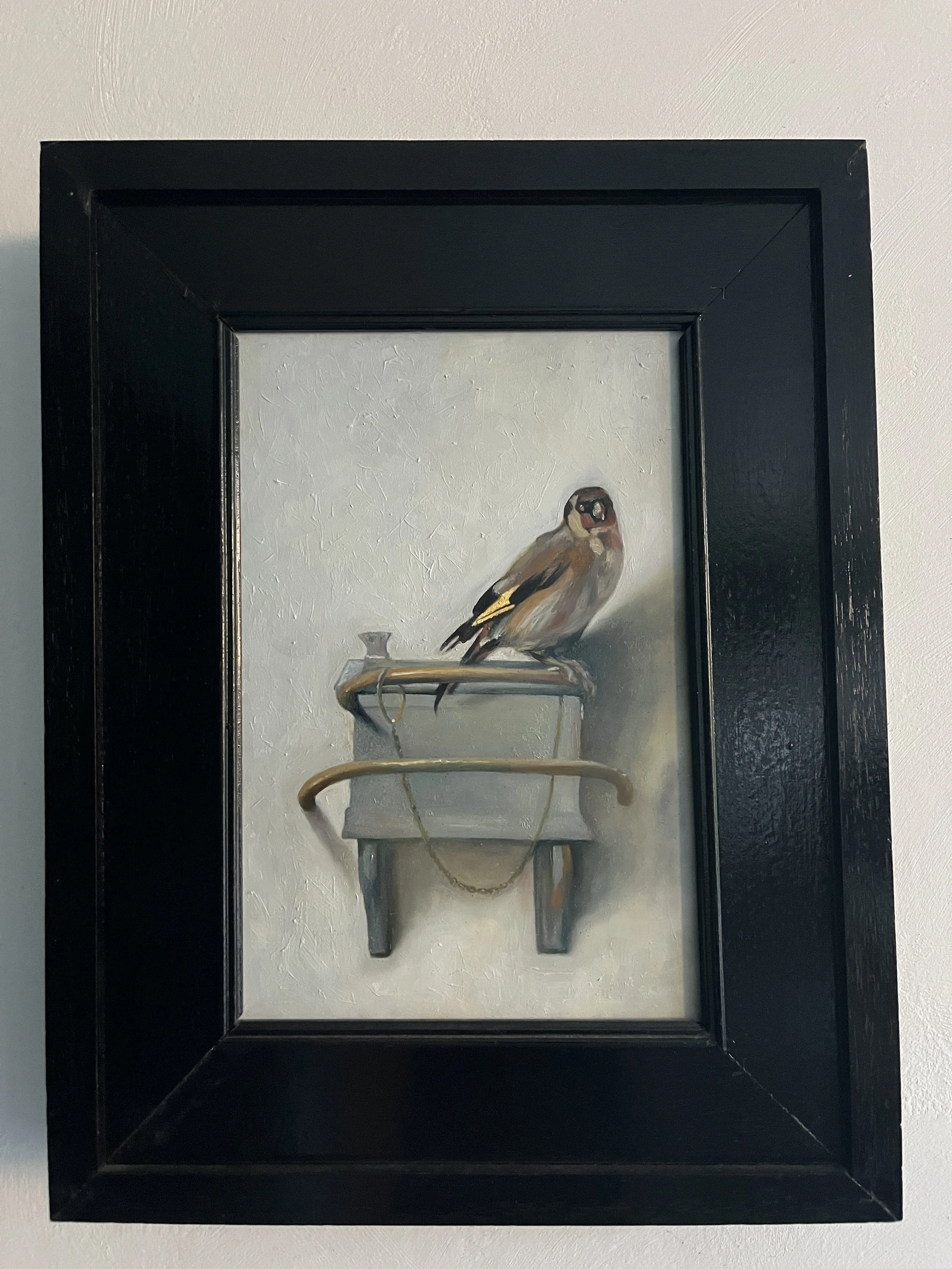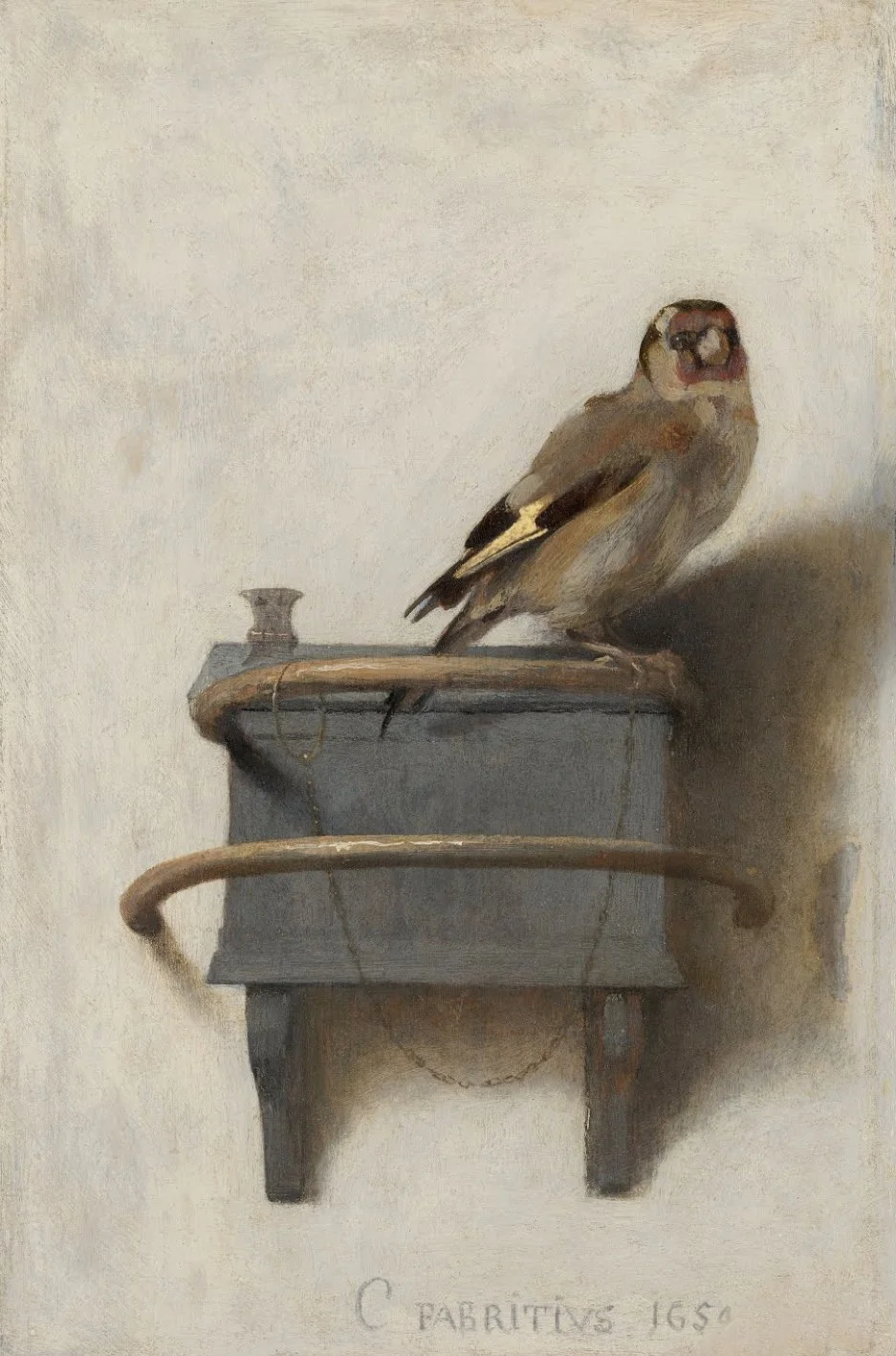The Goldfinch
The Goldfinch
This is my rendition of The Goldfinch, inspired by the timeless beauty and simplicity of the original. For this painting, I chose to work using the direct painting method (alla prima), allowing the brushwork to remain fresh and expressive.
Unlike the multi-layered techniques I often use, where transparent glazes build depth over time, this piece called for a looser, more painterly approach. The immediacy of the method helped capture the fleeting life and delicate energy of the small bird, perched with quiet dignity against a soft, neutral background.
Every stroke was placed with intention, aiming to balance precision with spontaneity, to let the painting breathe.















With a little animation.
"The Goldfinch" is a small yet captivating painting by the Dutch artist Carel Fabritius, created in 1654. Despite its modest size, it has become one of the most iconic works from the Dutch Golden Age.
*
"The Goldfinch" is a small yet captivating painting by the Dutch artist Carel Fabritius, created in 1654. Despite its modest size, it has become one of the most iconic works from the Dutch Golden Age. *
Title: The Goldfinch
Artist: Carel Fabritius
Date: 1654
Medium: Oil on panel
Dimensions: 33.5 × 22.8 cm
Location: Mauritshuis, The Hague, Netherlands
The painting shows a single goldfinch perched on a wooden feeder, which is attached to a wall. A delicate chain is attached to the bird’s leg, indicating it is a pet. The background is a flat, plastered wall, which makes the bird’s lifelike presence stand out all the more. The image is rendered with luminous, realistic detail and a subtle use of shadow, light, and texture.
Fabritius was a pupil of Rembrandt and a teacher to Vermeer. Unlike Rembrandt’s dramatic chiaroscuro, Fabritius developed a lighter, more luminous palette and a subtle approach to spatial illusion. The Goldfinch uses a trompe-l'œil (French for "deceive the eye") technique, which makes the painted bird look as if it’s sitting right in front of you in three dimensions.

